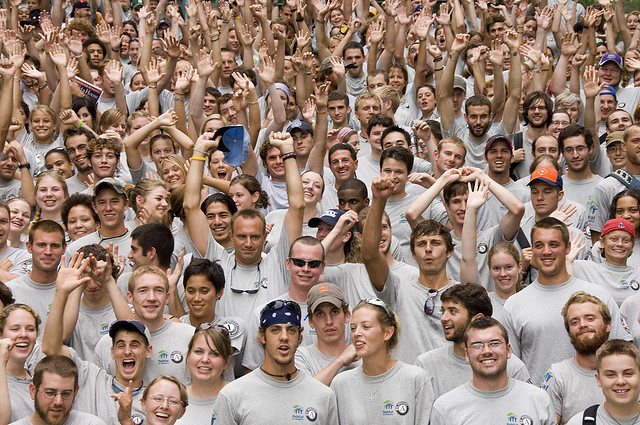AARP Hearing Center
Millennials: a New Hope for Philanthropy
By David Whitehead, June 26, 2012 12:59 PM
As a Boomer, I have often shared my disappointment with my own generation on its performance and commitment to philanthropy. We have a lot to learn from the preceding generation -- the greatest generation -- that not only recognizes the importance of giving and giving back, but sees it as a responsibility to be shared with the generations to come. Actually, I think the Boomers will get there. It will just take some time.

Enter the Millennials (Generation Y or the "Net Generation," as they are sometimes called). Though Wikipedia doesn't define a specific start or end date for this generation, they are typically referred to as those born between the late 70s (or early 80s) and early 2000s.
I am the father of four, all which fall within this generation, and I am impressed and awed by the caring nature, self-confidence and acts of giving/volunteering that are demonstrated by these young people. My youngest actually runs a small nonprofit of teens who give and raise funds for blood cancer diseases and all 20+ members combine forces to generate some $50,000 or so each year from their efforts. Impressive. (OK, a little "proud father" coming out).
But now there is even more proof. The Millennial Impact Report 2012 (conducted by Achieve and Johnson Grossnickle+ Associates), the third in a series, continues to point out the growing impact in philanthropy of this group.
- 75% of those surveyed gave in 2011, well above the national average.
- While the majority of those gifts were $100 or less, the typical millennial gave to at least five organizations and 87% said that they expected to do the same (or more) in 2012.
- 63% reported they volunteered for nonprofits in 2011, and 81% who volunteered were invited by a friend.
- 77% said they were interested in a leadership position (e.g., board, committee)
- By a margin a 2:1, Millennials who volunteer were more likely to make donations.
However, it isn't just that they give, but how they get their information, how they decide to become involved and how they give that is changing philanthropy.
- Most get the information via their smart phone (77% surveyed use one), via websites, social media or e-newsletters. Not the mail ("snail mail") or chance meetings.
- Most learn about events, volunteer activities or opportunities via Facebook (67%) or Twitter (28%). Many choose to "follow" the nonprofits/charities that interest them most.
- 70% give online via a nonprofit's webpage.
It's clear, we have arrived in a digital world, and connecting for younger people has become a daily (if not hourly or more often) activity. Philanthropy will be changed, and even more vibrant, as a result.
I, for one, am very excited about the future of philanthropy in our country. I just never thought our young people would be the ones to lead the way.
Photo credit by: Habitat for Humanity Great Britain































































